The area where we stay has hard water and after performing different processes to soften water, we have drawn some conclusions and effective ways to make the water drinkable. Before thar let us see what does the process of softening water exactly do.
Softened water is a process of exchange of hard mineral ions with soft ions of sodium. There is a very detailed process through which the softening takes place. When untreated water moves from the brine tank and passes through softener salts, it then flows to the resin tank. Here the calcium ions are grabbed by the resin bed and exchange sodium ions which makes the water soft. But then it all depends on the hardness of water right. If the ions of hard minerals are at elevated levels which means water is grainy, the more sodium exchange shall take place. Sodium in large quantities can cause health issues and further make the water undrinkable.
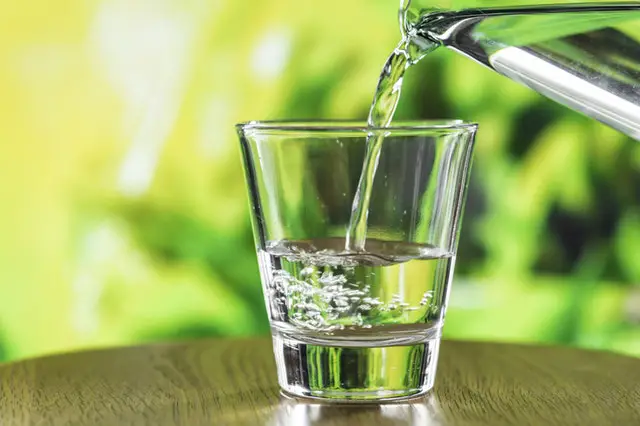
Here, we will see the distinction that exists between hard water as well as soft water. The process that is done in order to treat softened water and make it drinkable and whether or not the boiling and distillation process is enough to make softened water drinkable.
Hard Water vs Soft Water
Hard Water and Soft Water both are very different in their texture, essence, and even taste. Hard Water is more grainier and to know exactly how grainy it is you need to measure it on a gallon basis. Now, let us see a few differences between the two:
|
Point of Difference |
Hard Water |
Soft Water |
| Meaning | Hard Water essentially means untreated water. | Soft Water is the end product of filtering water and separating sediments, small pebble like structures, separating hard minerals like Calcium and Magnesium. |
| Existence | Hard Water can exist even after cleaning. Given the treatment is done by an evaporated filter. | Soft Water cannot exist on it’s own, it can only exist when treated by a water softener |
| Dirt | Hard Water can be dirty. | Soft Water cannot be dirty. |
| PPM (parts per million) | Water is termed hard when it’s above 180 ppm, very hard if it exceeds 400ppm. Anything beyond that shall be termed undrinkable. | Soft Water exists when it’s under 17ppm. |
| Why Undrinkable? | Hard Water is undrinkable because it has excess of many minerals that harden the molecular bonds. | Soft Water is undrinkable because it has been added with excess sodium to make it soft and riddle impurities |
| Water Softening Process | Hard Water can be treated with Water Softener which in turn shall be again treated with a RO filter | Soft Water needs to be treated with RO Filter to loosen its sodium ions which the level of it is lost in soft water. Sodium in such large quantities is not safe. |
| Filteration | To get hard water you can use sand to filtrate the outer dirt | Only RO Filter can clean soft water |
| Drinkable | Hard Water is not safe to drink | Soft Water can be used for drinking if the water does not fall in the extreme grainy category. |
| Availability | Hard Water can be availed in natural settings. It also means getting water supply through a pipeline. | Only water softener treated water can be called soft water. |
Steps to Make Softened Water Drinkable
Following are two easy steps to make softened water drinkable:
Getting Rid of The Hard Minerals
Water when left untreated or found in a natural source has minerals that make the molecular consistency compact. To get rid of these hard minerals you need to treat your water using a water softener. Water Softeners specialize in a process where in a resin tank there exists a resin bed.
The water moves initially to the brine tank where the water gets treated with softener salts.Then the water moves to a resin tank where the resin bed is laden with sodium ions when the water flows, the bed grabs hard mineral ions like calcium, exchanging it for softer minerals like sodium and magnesium. This process itself can make the water drinkable, but sodium levels need to be checked through a mineral checking device.
Way to Make Soft Water Drinkable
Softened water is healthier for any person to drink. It assures good health but the process of identifying safety is nuanced. For instance, if the water that you treat has more grains than the expected range which is more than 400ppm, that will mean in the ion exchange process more sodium ions are added in the treated water.
This can shoot up the daily recommended and safe intake of sodium in our food. Then it becomes imperative to try and declutter the water through RO (Reverse Osmosis) mechanism to destroy small micron particles of sodium. Only Reverse Osmosis filters that cleans water through applying pressure on its membrane can destroy sodium ions which is higher than the recommended FDA guidelines.
Now let us see some more information on making softened water drinkable and a few FAQs on the same.
How Does Distillation Make Softened Water Drinkable?
Distillation is a process that involves boiling water to create steam and then cooling the steam to condense it back into liquid form. This process is effective in removing impurities from water, including minerals and other contaminants.
When water is heated to its boiling point, any impurities present in the water remain behind as the steam rises. The steam is then collected and condensed back into liquid form, resulting in pure water that is free from impurities.
This distilled water can be used for various purposes, including drinking, cooking, and other household applications. The process of distillation is particularly effective in removing minerals that cause hardness in water, such as calcium and magnesium.
Therefore, if softened water is distilled, the resulting water will be free from any remaining minerals or contaminants and safe to drink. However, it’s worth noting that distilled water lacks essential minerals that are beneficial for human health, such as calcium and magnesium, and should not be relied on as the sole source of drinking water for extended periods.
Drinking Softened Water Side Effects
Softened water in itself does not mean it is drinkable. The softened water has a lot of sodium ions in it when the water is treated in the resin bed. Softener does get rid of many hard chemicals like calcium carbonate. But it also adds a lot of excess sodium to make the water soft. Sodium can cause health problems in longer timespan. Let us see a few side effects of drinking softened water.
- Sodium can have detrimental effects on various body parts including the heart, kidneys, and eyes.
- Sodium can cause blood pressure risk and that can further elevate the chances of someone having a heart attack.
- Sodium can also affect a person’s sight and cause blindness.
- Potassium in higher quantities in the blood can induce arrhythmias which can lead to organ failure.
- The daily safe intake of sodium is however fixed at 3240 mg. If anyone consumes more sodium than the prescribed number they can create severe health problems. For instance issues like heart failure.
- A daily intake of 8.4 grams is the requirement of the human body. If someone has more than that number their health is at risk.
- Hard water in some areas can be more than 400ppm. If the PPM raises itself above the 400 mark in ppm terms in hard water it will require a lot of sodium ions to neutralize it and that can cause severe health complications. It’s always best to use the softener first and then process the water again in a RO Filter. RO Filters have semi-permeable membranes that gushes the water with force and breaks apart the smallest of microns. This can take care in getting rid of the excess sodium.
Hardness/Softness of Water
| Water Hardness | Parts Per Million (PPM) |
| Soft Water | Less than 17.0 PPM |
| Slightly hard | Between 17.0-60 PPM |
| Moderately hard | Between 60-120 PPM |
| Hard | Between 120-180 PPM |
| Very Hard | More than 180 PPM |
FAQs on Consuming Soft Water
Following are the few commonly asked questions with regards to consumption of soft water:
Is Soft Water Safe To Drink for Dogs?
Soft Water is not good for dogs in terms of co-morbidities of your dog. It is not good if your dog is very fat. When sodium levels are elevated your pet can become more fat. Storing fat can be detrimental for your dog’s health in the long run.
Hard water on the other hand is perfectly safe for your dogs. Dogs do not get ill from drinking hard water. Their health improves as they get a lot of good minerals from it like calcium for instance which is good for their bones. Similarly, magnesium also helps in building a dog’s muscular frame.
Only in some exceptional cases they might need treated water. But not using a softener does not mean you don’t make the water clean. You still need to give your dog filtered water, just that softened water is not a requirement for a dog.
How to Remove Salt From Softened Water for Plants?
Softened water contains a high amount of sodium that can be harmful to plants if used for irrigation. Here are some methods to remove salt from softened water for plants:
- Use a Reverse Osmosis System: Reverse osmosis is an effective way to remove salt and other minerals from water. A reverse osmosis system uses a semi-permeable membrane to filter out impurities from the water. You can install a reverse osmosis system in your home to remove salt from softened water before using it for plants.
- Mix Softened Water with Rainwater: Mixing softened water with rainwater is an effective way to dilute the salt content. Collect rainwater and mix it with the softened water in a ratio of 1:1. This will reduce the salt content and make the water suitable for plants.
- Allow Water to Sit: Another way to remove salt from softened water is to allow the water to sit for a while. Fill a container with softened water and let it sit for a day or two. The salt will settle at the bottom of the container, and you can then use the water on the top for your plants.
- Use a Distillation System: Distillation is another effective way to remove salt from water. You can use a distillation system to remove salt from softened water before using it for plants. This method involves heating the water to create steam and then condensing the steam back into liquid form, resulting in pure water that is free from salt and other impurities.
These are some ways to remove salt from softened water for plants. It’s important to make sure the water you use for your plants is free from harmful contaminants to ensure healthy growth.
Can you Drink Softened Water if Boiled?
Drinking softened water that has been boiled is generally considered safe, as boiling water kills most harmful bacteria and viruses that may be present in the water. However, it’s worth noting that boiling the water will not remove the excess sodium that is present in softened water, which can be a health concern for some people.
Softened water is treated with sodium to remove minerals that cause hardness, such as calcium and magnesium. This process replaces the minerals with sodium, resulting in a higher level of sodium in the water. Drinking water that is high in sodium can be problematic for people with certain health conditions, such as high blood pressure or heart disease.
Boiling softened water does not remove the sodium, so it’s not a reliable method for reducing the sodium content of the water. If you need to reduce the sodium content of your drinking water, you may need to consider other options, such as using a reverse osmosis system or a distillation system to remove the sodium from the water.
In summary, boiling softened water can make it safe to drink by killing harmful bacteria and viruses, but it does not remove the excess sodium that may be present. It’s important to consider the potential health risks associated with high-sodium water before consuming it, particularly if you have a pre-existing medical condition.
Final Say
Soft Water can have bad effects on the human body when the sodium level rises beyond the daily allotted consumption level of a person. Many myths do rounds regarding the safety of drinking water. The excess salt in the long run is not good for the health of a person which is found in softened water. Here, the difference between hard and soft water clears many myths about drinking water.

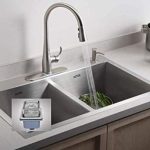
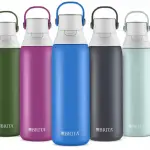

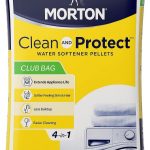

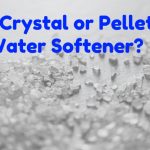




Add Comment